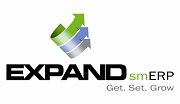 It makes little sense to buy a Ferrari when you need to trudge daily along bumpy, pothole-ridden roads. The average person does not need a Ferrari. The average person cannot afford a Ferrari. If by chance he does get a Ferrari, in all likelihood he will not be able to maintain the Ferrari.
It makes little sense to buy a Ferrari when you need to trudge daily along bumpy, pothole-ridden roads. The average person does not need a Ferrari. The average person cannot afford a Ferrari. If by chance he does get a Ferrari, in all likelihood he will not be able to maintain the Ferrari.A Fiat is more affordable. A Fiat is more suitable. Most importantly, the average man can maintain a Fiat in the long run. Once an ERP system is fully deployed, it stays in place for 10 to 12 years on average.
In India many firms use outdated IT systems in their offices to coordinate their business functions and resources. India is the hub for small and medium businesses and a cradle for start-ups. The majority of the country’s workforce is employed by small and medium enterprises – not the Fortune 500s. Business is set to boom and overtake China by the end of 2030. Despite the dynamic development, firms have failed to adopt more efficient and standard practices that results in them continue to lag behind.
The ERP solutions by the big firms in the ERP are too extensive, too complex and too confusing for SMEs. The processes, modules and programs designed are geared towards the requirements of large conglomerates and Fortune companies. For the system to be suitable for the average firm, considerable changes and customizations are required – which further drives up the cost of the ERP. It is akin to buying a Ferrari only to replace all its parts one by one and its engine with that of a Fiat’s. By all means, it is a poor decision at best and the catalyst for an absolute catastrophe at worst.
Many local IT and ERP providers are gaining ground as a results, because they build their solution specifically for small and medium enterprises at a fraction of the cost and with a much faster implementation cycle. Once you order for a luxury sports car and then proceed with the desired customizations it is already months past.
If you buy a Ferrari you can expect to wait a long time for it to finally be in your garage – with the necessary paperwork, regulatory compliances, formalities and customizations. If you buy a car from your local dealer, you can expect it in your garage within a week or two at most. Small and medium enterprises need a provider with local knowledge who can give adapted solutions. SMEs as a results are better off hiring Tier II and Tier III vendors who are based locally as they possess in-depth understanding about the relevant industry and business environment. The ERP systems that are provided by major IT firms are too extensive, and complex and do not have the flexibility to adapt their services to local conditions. Given that the large IT firms give standardized solutions throughout the country with their centralized support system, they lack the ability to adapt their service to very specific local needs of the SMEs. Partnering with Tier II firms who give local support service tends to be the wiser, better choice for SMEs.
It is essential that the modules in the ERP system are designed with the day to day processes and relevant industry specifics in mind. Vendors like ExpandERP provide business solutions specifically for SMEs and are specialized in export and manufacturing solutions. An SME thus has a solution that perfectly addresses their business needs with greater support at a fraction of the usual cost.
Tier II firms design sturdy affordable cars and have an extensive service support. Tier I firms prove state-of-the-art, customized luxury cars but at exorbitant rates and with limited support system. SMEs require a relatively sturdy, standard system that can handle the firm’s daily challenges and go over the bumps without breaking down. The tier II solution or the Fiat gives a smooth ride, good mileage without breaking the bank of the buyer. It is advisable to leave the Ferraris to the Fortune 500s and ride away in the Fiat and save the tears and headaches.
References:
http://www.cio.com/article/2429865/enterprise-resource-planning/10-famous-erp-disasters--dustups-and-disappointments.html
http://erpsoftware.swktech.com/blog/3-famous-erp-disasters-that-still-scare-us-today


